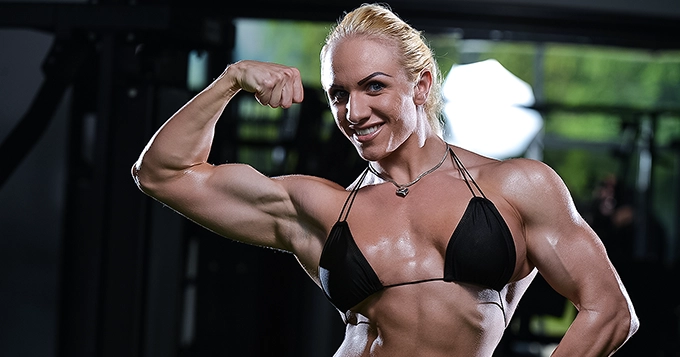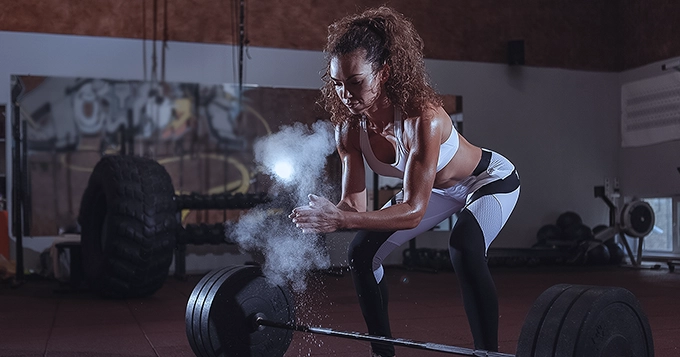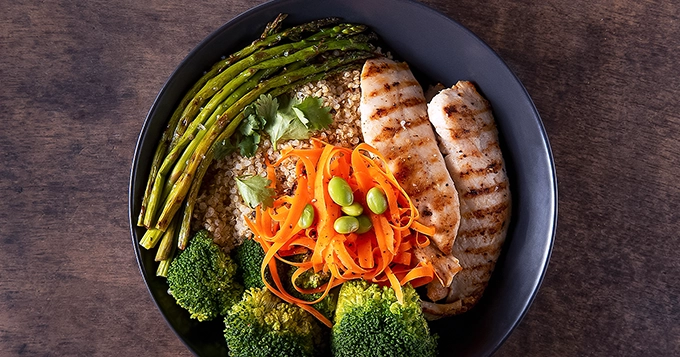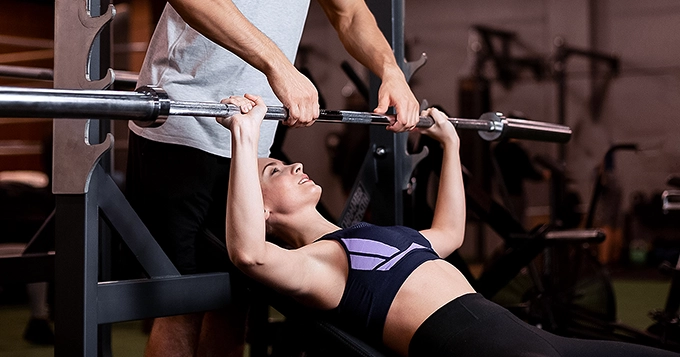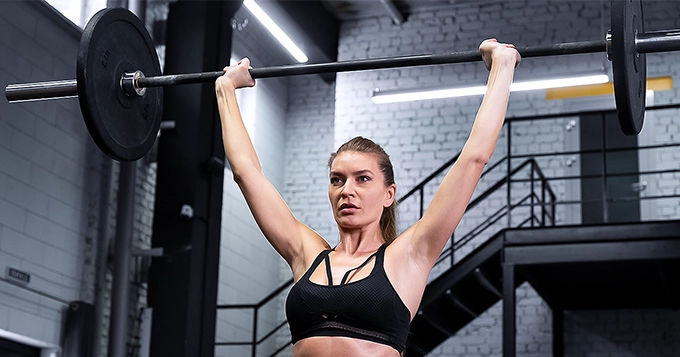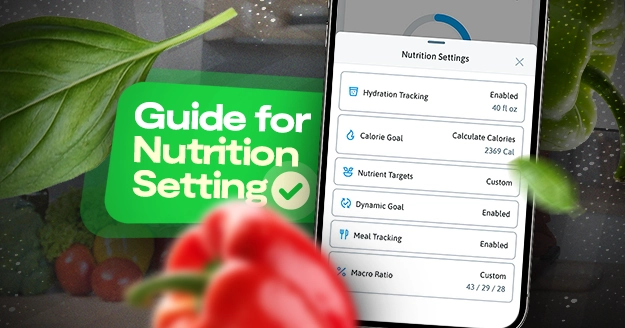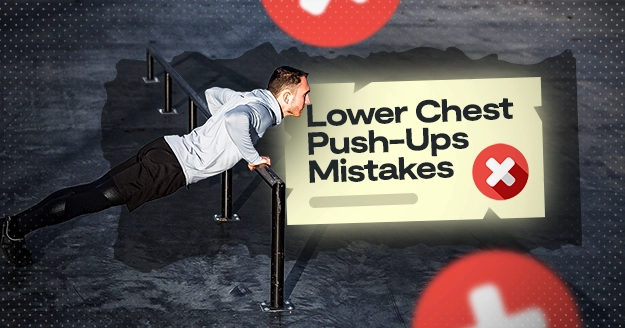Are you a woman interested in strength training or bodybuilding but hesitant to bulk up? There’s a lot of misinformation out there about bulking for women, and it’s time to set the record straight. Let’s sort facts from fiction and help you make informed choices regarding your fitness endeavors.
But first, let’s discuss what bulking is.
Understanding Bulking
Essentially, bulking involves increasing muscle mass and size by consuming more calories and engaging in strength training. It’s worth noting that bulking is accessible to everyone, whether you’re a competitive athlete or simply aiming to enhance muscle growth and definition.
Breaking Myths
Myth: Women Will Get Bulky from Lifting Weights
Fact: This is one of the most persistent myths in the fitness world. Women have lower testosterone levels than men, a hormone necessary for significant muscle growth. Doing weights won’t magically transform you into the Hulk. Instead, it will sculpt your body, increase muscle tone, and lead to a leaner physique.
Myth: Women Should Stick to Cardio to Avoid Bulking
Fact: While cardio is excellent for cardiovascular health and burning calories, it’s not enough on its own to achieve a toned and defined look. Adding strength training into your routine is vital for building muscle and shaping your body. Don’t be afraid to lift weights – it’s essential for overall fitness and can help you achieve your goals faster.
Myth: Women Should Lift Light Weights for High Reps to Tone
Fact: The idea that high repetitions with light weights will “tone” muscles is a common misconception. While endurance training has its benefits, lifting heavier weights with proper form is more effective for building muscle definition. Focus on progressively challenging your muscles by increasing the weight you lift over time to see significant results.
Myth: Women Should Follow Different Nutrition Plans Than Men When Bulking
Fact: Nutrition plays a crucial role in achieving your fitness goals, regardless of gender. While men may generally require more calories due to higher muscle mass and metabolic rate, the fundamentals of nutrition remain the same for both women and men. Aim to consume a balanced diet rich in protein, healthy fats, fruits, and vegetables to support muscle growth and recovery.
Myth: Women Will Gain Weight If They Bulk
Fact: It’s normal to see fluctuations in weight when you start a new fitness regimen, especially if you’re incorporating strength training. Fat weighs less than muscle, so when you lose fat and build muscle, it’s possible for your weight to stay the same or even increase slightly. However, this doesn’t mean you’re getting “bulky.” Focus on how you feel, notice how your clothes fit, and note your overall strength and confidence rather than the number on the scale.
How to Start Bulking Female Guide
- Start with a positive mindset: Believe in your ability to grow stronger. You can achieve your fitness goals.
- Educate yourself: Learn proper lifting techniques and seek guidance from qualified trainers or reputable resources. Understanding the principles of bulking and cutting for women is essential for optimizing muscle growth and achieving desired body composition goals.
- Establish attainable goals: Decide what you want to accomplish and make a plan to get there.
- Track your progress: Use fitness apps to monitor your workouts, strength gains, and overall improvements. You can also go with the traditional way by keeping a traditional journal.
- Look for a supportive community: Surround yourself with people who share your values so that they can inspire and uplift you on your journey.
- Listen to your body: Notice how you feel during workouts and adjust intensity or exercises as needed to prevent injury and promote recovery.
What to Eat When Bulking Female
Bulking as a woman requires a strategic approach to nutrition and strength training to support muscle growth while minimizing fat gain. Here’s a guide on what to eat when bulking:
Lean Protein
Protein is crucial for muscle repair, growth, and bulking for women. Opt for lean sources such as fish, tempeh, chicken breast, turkey, lean beef, legumes, tofu, and low-fat dairy products. For optimal support of muscle synthesis, try to incorporate protein into each and every meal.
Aim for around a gram of protein per pound of body weight every day while aiming to gain muscle.
Complex Carbohydrates
Carbs provide the energy needed for your intense workouts and replenish glycogen stores in muscles. Choose complex carbs such as whole grains, quinoa, brown rice, sweet potatoes, oats, and fruits and veggies. These carbs provide you with sustained energy and essential nutrients for overall health.
You should aim for between 0.25–0.75 grams of fat per pound of body weight per day during bulking, which equates to 15–30% of your daily caloric intake.
Healthy Fats
Don’t shy away from healthy fats, as they’re essential for hormone production and overall health. Include sources like olive oil, avocados, nuts, seeds, and fatty fish such as salmon and mackerel. Incorporating these fats into your diet helps support muscle growth and keeps you feeling satiated.
It is best to obtain 40–60% of your calories from carbohydrates when bulking.
Calorie Surplus
Female bulking involves consuming more calories than you burn. Try maintaining a daily calorie surplus of 250–500 to promote muscle building without gaining too much weight. Track your intake using a food diary or app to ensure you’re meeting your calorie goals.
It’s important to adjust your daily calorie intake based on how much weight you gain weekly.
- If you’re not gaining weight, add 100 to 200 calories.
- If you’re gaining weight too fast, remove 100 to 200 calories
Frequent Meals
Instead of 3 large meals, aim for smaller, more frequent meals throughout the day. This approach helps keep your energy levels steady, maximizes muscle protein synthesis, and ensures you’re consistently providing your body with the nutrients needed for growth and repair.
Post-Workout Nutrition
After a workout, it’s crucial to refuel your body with a combination of protein and carbs to support your muscle recovery and growth. A post-workout snack or meal containing protein and carbs can help optimize recovery.
Hydration
Hydration is needed for performance and overall health, and it plays a crucial role in muscle function and recovery. Try to drink at least 8 to 10 glasses of water daily, and adjust your intake based on the climate or your activity level.
Supplements
While it’s possible to meet your nutrient needs through whole foods, some women may benefit from supplementing their diet with creatine, branched-chain amino acids (BCAAs), or protein powder to support muscle growth and recovery. Consult a healthcare professional before adding supplements to your routine.
Benefits of Strength Training for Women
Strength training helps protect joints.
Strength training helps protect joints: Contrary to popular belief, lifting weights can actually strengthen the muscles around joints, providing better support and reducing the risk of injury. Strong muscles help stabilize joints, promoting better joint health and function over time.
Building muscle burns more calories
While aerobic exercises such as running and cycling tend to burn calories more rapidly in the short term than strength training, those who incorporate weightlifting into their routine may see a rise in calorie expenditure over time.
Muscle tissue is metabolically active, requiring energy (calories) in order to maintain itself. By increasing muscle mass through strength training, women can boost their metabolism and burn more calories (cal), even at rest. This can be really beneficial for weight management goals and overall metabolic health.
Resistance training protects against injuries
Since muscle mass typically peaks in your 30s and then begins to decline gradually, it’s important to take measures to slow down this process. If you don’t engage in strength training exercises, you’re more likely to experience weakness, increasing the risk of falls, which is the one of the leading causes of death among older adults in the U.S.
Considering that muscle loss, also known as sarcopenia, affects more than 45% of older adults in the U.S., it’s crucial to be aware of it and take preventive actions.
Strengthening muscles and improving balance through resistance training can help women prevent injuries and reduce the risk of falls, especially as they age. By enhancing muscle strength and coordination, strength training contributes to better overall physical resilience and reduces the likelihood of accidents or mishaps.
Strength training helps control blood sugar
Regular strength training has been shown to improve insulin sensitivity and glucose metabolism, which are crucial factors in managing blood sugar levels. For women at risk of or dealing with conditions like diabetes or insulin resistance, incorporating strength training into their routine can be highly beneficial for maintaining stable blood sugar levels and overall health.
Roughly one in three adults in the United States. is affected by prediabetes. Strength training can help you manage your blood sugar levels by removing glucose from your bloodstream.
When you engage your muscles in activities such as pushing, pulling, lifting, or moving during exercise, they demand more glucose for energy. This is why exercising after meals can aid in regulating blood sugar levels.
Moreover, a recent study revealed that strength training might be even more beneficial than aerobic exercise in regulating blood sugar levels among individuals with diabetes.
Muscle building may help boost mood
Exercise, including strength training, has long been associated with improved mood and mental well-being. When women engage in strength training, the release of endorphins – natural mood lifters – can contribute to reduced stress levels and a sense of happiness.
A meta-analysis featured in the medical journal JAMA Psychiatry in 2018, combining findings from over 30 clinical trials, indicated a decrease in depression symptoms among individuals who engaged in weight training at least twice a week.
Additionally, strength training has demonstrated benefits in alleviating depressive symptoms in individuals susceptible to metabolic disease. Moreover, studies have revealed that strength training can also help alleviate anxiety.
